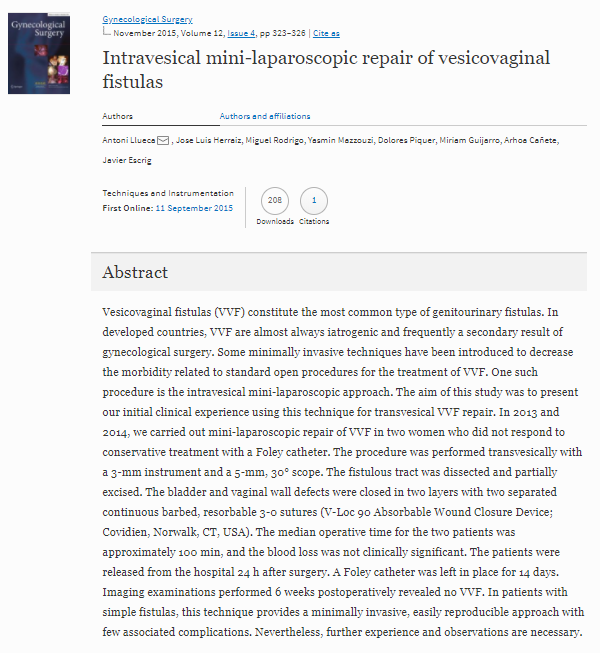INVESTIGATION
Intravesical mini-laparoscopic repair of vesicovaginal fistulas
A CASE REPORT
Authors:
Yasmin Mazzouzi,
Abstract:
Vesicovaginal fistulas (VVF) constitute the most common type of genitourinary fistulas. In developed countries, VVF are almost always iatrogenic and frequently a secondary result of gynecological surgery. Some minimally invasive techniques have been introduced to decrease the morbidity related to standard open procedures for the treatment of VVF. One such procedure is the intravesical mini-laparoscopic approach. The aim of this study was to present our initial clinical experience using this technique for transvesical VVF repair. In 2013 and 2014, we carried out mini-laparoscopic repair of VVF in two women who did not respond to conservative treatment with a Foley catheter. The procedure was performed transvesically with a 3-mm instrument and a 5-mm, 30° scope. The fistulous tract was dissected and partially excised. The bladder and vaginal wall defects were closed in two layers with two separated continuous barbed, resorbable 3-0 sutures (V-Loc 90 Absorbable Wound Closure Device; Covidien, Norwalk, CT, USA). The median operative time for the two patients was approximately 100 min, and the blood loss was not clinically significant. The patients were released from the hospital 24 h after surgery. A Foley catheter was left in place for 14 days. Imaging examinations performed 6 weeks postoperatively revealed no VVF. In patients with simple fistulas, this technique provides a minimally invasive, easily reproducible approach with few associated complications. Nevertheless, further experience and observations are necessary.


Cátedra Medtronic de Formación e Investigación Quirúrgica
Multidisciplinariedad en cirugía para un mejor resultado



